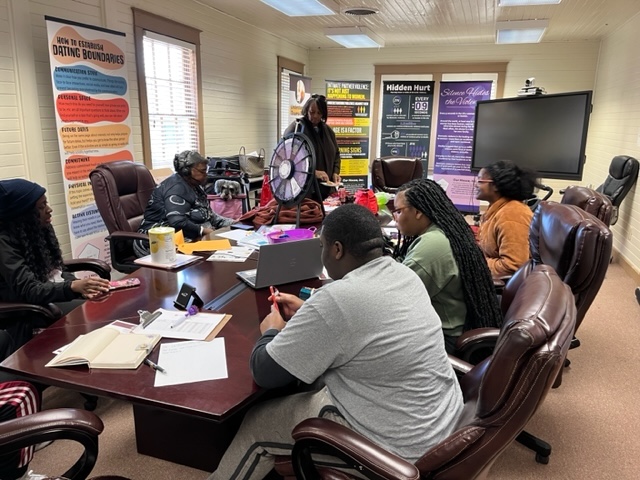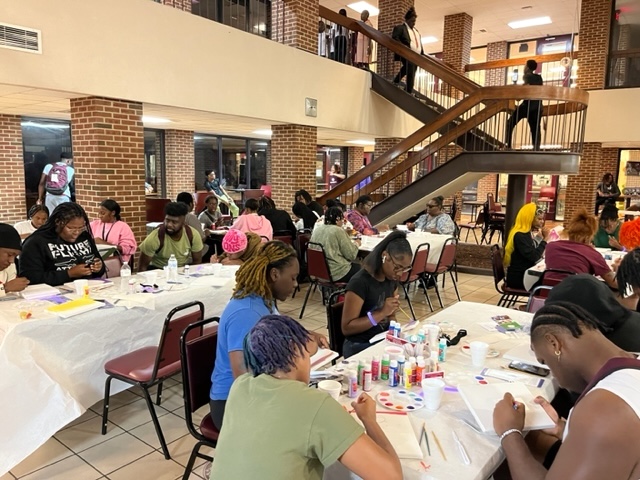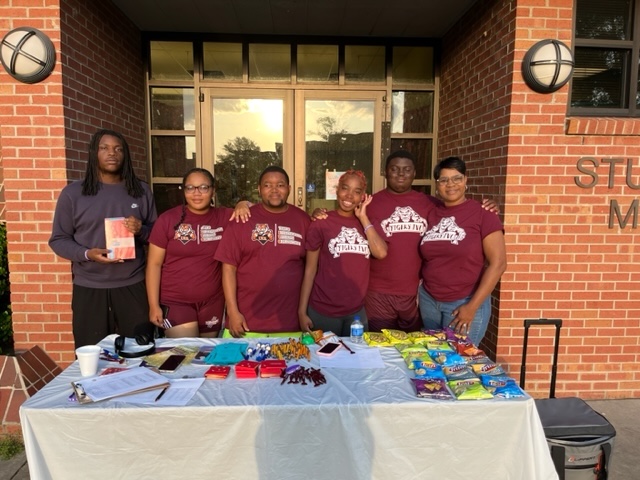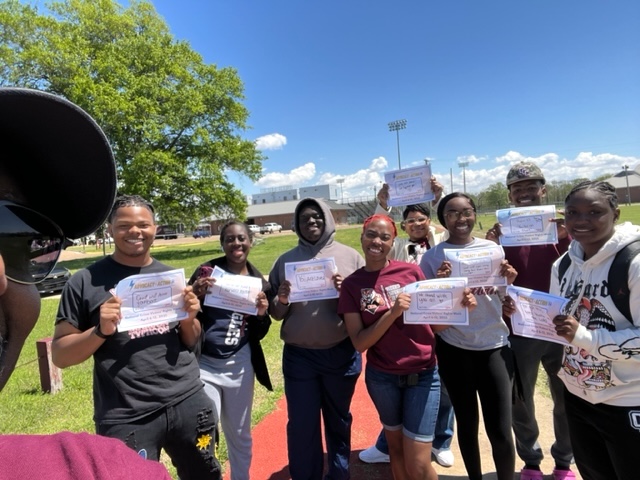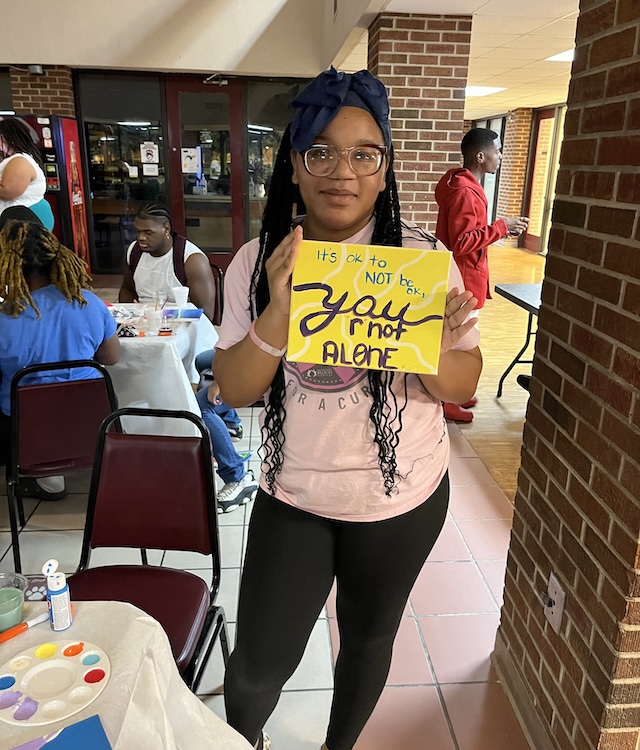Interpersonal Violence Program
- Home
- Interpersonal Violence Program
CCC Interpersonal Violence Program

Powder Puff Flag Football
Tuesday, October 21, 2025 at 6:00 p.m.
We’re inviting CCC girls to join a flag football game honoring survivors of domestic violence, and we’re also seeking male participants to serve as coaches, referees, or cheerleaders. Be part of this fun and meaningful event.
The Coahoma Community College Coordinated Community Response Team (CCRT) is a group of key campus stakeholders and community partners dedicated to creating a comprehensive strategy in preventing and responding to dating and domestic violence, sexual assault, and stalking, through education and training. We serve all campus communities by providing confidential, compassionate and trauma informed care where individuals feel valued, heard, and protected.
Steps to becoming an Active Bystander:
- Notice the situation: Be aware of your surroundings
- Interpret it as a problem: Recognize that someone needs help
- Feel responsible to act: See yourself as being a part of the solution
There are different ways you can choose to intervene.
The 5 D’s of Bystander Intervention
- DIRECT. Approach the person causing harm, name the inappropriate behavior.
- DISTRACT. Create a diversion to interrupt harm and/or give the target an opportunity to remove themselves.
- DELEGATE. Ask someone else for help.
- DOCUMENT. Create a record of the incident or situation.
- DELAY. Circle back late if you didn’t intervene in the moment.
A pattern of physically, sexually, verbally, and/or emotionally abusive or controlling behavior in a dating relationship.
Dating/Domestic violence is more than a bruised face or broken arm. It includes:
- Physical Abuse -Any unwanted contact with the other person’s body. Physical abuse does not have to leave a mark or a bruise.
- Sexual Abuse -Any sexual behavior that is unwanted or interferes with the other person’s right to say “no” to sexual advances.
- Emotional Abuse -Saying or doing something to the other person that causes the person to be afraid and/or have lower self-esteem.
How To Support Those Experiencing Dating/Domestic Violence
- Choose a good time and place to talk.
- Ask questions and listen without judgement.
- Emphasize that you are concerned.
- Let them know that the violence is not their fault.
- Let them know that NO abuse is ever acceptable.
- Let them know that help is available.
- Leave the door open for future conversations.
- Teach safe and healthy relationships
- Disrupt the developmental pathways toward partner violence
- Early childhood training
- Create protective environments that do not tolerate partner violence.
- Empower bystanders to help others who are in abusive situations, and provide them with resources and guidance.
- Watch out for the red flags of partner violence.
- Bring awareness to the plight of partner violence.
Red Flags
- Extreme jealousy
- Preventing you from making your own decisions
- Constant put downs and verbal threats in person, online, via email or text message
- Being asleep or unconsciousness
- Incapacitation due to excessive use of alcohol or drugs
- Persistent phone calls or text despite being told not to make contact in any form
- Threats to family, friends, property or pets of the victim
- Waiting for the victim at workplace, in the neighborhood/residence hall, after class, and where the stalker knows the victim goes
The Red Zone is the period of time from the beginning of fall semester to Thanksgiving break when sexual assaults on U.S. college campuses spike. Although every student, regardless of age or gender, is at risk, first year female identified students are the most vulnerable.
- Students should create a safety plan
- Students should be educated on sexual assault, consent, reporting, and available resources
Any involuntary sexual act in which a person is forced to engage in against her/his will.
Signs A College-Age Student May Have Been Sexually Assaulted
- Shows signs of depression
- Displays self-harming behavior
- Low self-esteem
- Avoiding specific situations or places
- Falling grades or withdrawing from classes
- Increase in drug or alcohol use
- Anxiety or worry about situations that did not seem to cause anxiety in the past.
- Sexually transmitted infections (STIs)
Engaging in a course of conduct directed at a specific person that would cause a reasonable person to fear for their safety or suffer substantial emotional distress.
- Between 6% to 39% of college students report being stalked since entering college.
- 40% of college students responded to a poll saying they had engaged in at least one type of stalking after the end of a relationship.
- 18 to 24-year-olds experience the highest rates of stalking among adults.
- Students at a higher risk of experiencing staking include women, students of color, LGBTQIA+ students, students with disabilities, students living off campus, and younger students.
- Up to 80% of people stalked on college campus may know who their stalker is.

Tiger I.V.O.
Tiger I.V.O. is a student volunteer group that collaborates with the interpersonal Violence Program to educate the campus community through prevention and bystander intervention education on dating and domestic violence, sexual assault, and stalking (interpersonal violence). Tiger I.V.O. is committed to addressing interpersonal violence through peer education, advocacy, and helping to create buy-in from the campus community.
![tbody/tr[5]/td[2]/descendant::img/@alt](/_resources/images/unscripted.jpg)
Unscripted Campaign
Young men today are facing numerous challenges. Enrollment and retention rates are steadily declining, and a staggering 65% of young men report feeling that “no one really knows me.” Additionally, two-thirds of men say they feel more praised and accepted when they act in ways considered stereotypically manly. However, these traditional notions of masculinity are often linked to negative outcomes such as depression, sexual harassment, and binge drinking. Unscripted is an initiative designed to grow the leadership of college men to end violence through care, connection, and accountability. The campaign seeks to build a future for healthy manhood on campus through stories & community.
Kenneth Gooden, Program Director
(662) 621-4666
(662) 645-1907
kgooden@coahomacc.edu
Loria Fortune-Barfield, Prevention Liaison
Office #: 662-621-4077
lbarfield@coahomacc.edu
If you or anyone you know has experienced interpersonal violence (dating violence, domestic violence, sexual assault, and/or stalking) the following resources are available to you.
On-Campus
Reporting
Title IX
662-621-4853
Campus Safety
Dickerson-Johnson Library (1st Floor)
Phone: (662) 621-4175
After Hours : 662-645-4720
Victim Services
Nurse
Student Affairs Multi-complex Center
Extension: 662-621-4197
Counseling
Zee A. Barron Student Union (1st Floor)
Phone: (662) 621-4858
Director of Student Engagement
Zee A. Barron Student Union (2nd Floor)
Phone: (662) 621-4153
Off-Campus
Coahoma County Sheriff’s Office
662-624-2411
Family Crisis Services of Northwest Mississippi, INC
Contact Information
662.234.9929 -- 800.230.9929
Office.fcsoxford@gmail.com
www.oxfordadvocacy.org
House of Grace
Phone: 662-253-0252
Fax: 662-253-0251
houseofgrace.ed@gmail.com
Hotline: 662-342-1432 - 877-393-7233
Mississippi Coalition Against Domestic Violence
Toll-Free: 1-800-898-3234
Local: 601-981-9196
Fax: 601-981-2501 (fax)
support@mcadv.org
Mississippi Coalition Against Sexual Assault (MCASA)
Contact Information
Main: 601-948-0555
Toll-free: 888-987-9011
Fax: 601-948-0525
National Coalition Against Domestic Violence
1-800-799-SAFE (7233)
Region One Mental Health Center
662-627-7267
- Sexual harassment is unwelcome conduct of a sexual nature. It includes unwelcome sexual advances, requests for sexual favors, and other verbal, nonverbal, or physical conduct of a sexual nature. Sexual violence is a form of sexual harassment prohibited by Title IX.
- Title IX protects students in connection with all school related events.
- If a school knows or reasonably should know about student-on-student harassment, Title IX requires the school to take immediate action to eliminate the harassment, prevent its recurrence and address its effects.
• Title IX Sexual Misconduct Policy
• Title IX Complaint Form
